MO Tested: Wolfman Motorcycle Luggage Review

Flexible, versatile, and easily removable soft luggage. Dust and bug guts not included.
The image of adventure touring is that of riders traveling the world on heavyweight motorcycles with big, aluminum panniers and a variety of duffel bags lashed to the top. And if you consider the BMW GS crowd, that is a very popular look. However, you don’t need giant hard bags to travel. Soft luggage will often do quite nicely for overnight, week-long, or even transcontinental treks, and they have the ability to better withstand tipovers without breaking, which can be an issue with hard luggage. What you want from this type of luggage platform is the ability to adjust the carrying capacity to the gear requirements needed for your particular trip. The reality of human nature is that we will find “necessary” gear that exactly matches (or slightly exceeds) the room we have to carry it. Try this quick test the next time you go on a day ride: Ask your friends with panniers what they brought with them. Odds are the bags are mostly filled with things they could need.
Wolfman Motorcycle Luggage
+ Highs
- Fits a wide range of motorcycles
- Not a one-size-fits-all solution
- Multiple bag designs for differing needs
– Sighs
- Over tightening the bags can damage waterproofing
- Versatility comes at the cost of more initial set up
- Black is the only color option
Eric Hougen, owner of Wolfman Motorcycle Luggage, is well aware of this human tendency, and I’ve heard him say more than once that people take too much stuff with them when they ride. So, he’s come up with a way to easily carry what they need for the trip at hand. Wolfman’s line of soft luggage is built around a base system, the E-Base for smaller dual sports and the B-Base for larger adventure bikes. These bases lash to the bike via three mounting points, and then provide a multitude of mounting points for a variety of bags. The bags that mount like traditional saddlebags are dry bags that Wolfman calls Rolies, which come in small, medium, and large sizes. On top of the two “legs” of the Base on the seat, Rolies or other more specialized bags can be mounted. For an overnight outing, you may only need small Rolies, while large ones might be the choice for a week-long trip. The system really is quite clever, and for this review, I’ve had the chance to test several different combinations of bags on different bikes.
Table of Contents
Bases
In 2010, Wolfman created its first rackless system for mounting modular bags to a variety of bikes. With the knowledge gained over a decade of use, Wolfman released the updated Unrack System in 2020. The new E-Base for smaller bikes and B-Base for larger ones are constructed of two layers of 840 denier TPU that sandwich a layer of plastic for strength. The Base lays over the back of the bike like a saddle, mounting via replaceable straps to the tail section and two lower frame pieces, like passenger pegs, and provides a stable base for the bags. Every mounting strap is replaceable. So, you’re not out of luck should you accidentally melt one on your bike’s exhaust. (Don’t ask how I know.)
Because the Base is the platform for most of Wolfman’s bags to mount, it has multiple laser-cut webbing slots in addition to 1- and 2-in. D-rings to use as attachment points. When fully mounted to the base, the Rolie bags in the saddlebag position on the legs will have no less than six attachment points on the Base. Center-mounted bags on the seat area of the Base will have 4 attachment points.
For some, paint is a delicate subject, and I would be negligent if I didn’t mention it here. One disadvantage that soft bags have compared to rigid-mounted ones is that, invariably, the bags or the Base come in contact with the painted surfaces (or shiny plastic) on your bike’s tail section. Because of the movement of these non-rigidly-mounted bags against the bodywork’s surface, some dulling will occur. Now, add in the jostling and the dust kicked up by riding off road, and you are guaranteed to return from a week-long trip with bodywork that shows some wear. It’s the nature of the adventure-touring beast. You can try to mitigate the damage by covering the shiny parts with a protective film, but if you want to keep your bike’s finish pristine, perhaps this type of luggage isn’t for you. Consider hard bags or buying a second set of rear bodywork for hanging at the local coffee house. Personally, I see this type of wear as a badge of adventure-touring honor.
Rolies
Rolies are Wolfman’s variation on the venerable dry bag with the fold-to-seal end. If you’ve ever done any backcountry water travel, you’ll be immediately familiar with how to seal these bags. Wolfman has designed these with rectangular bottoms to help them maintain their shape. The 840 denier, TPU-coated material used to form the bags is hella tough, as I learned after a few tipovers, and all seams are radio-frequency welded for strength and waterproofness. To mount the bags to the Base system, the exterior material receives a series of laser cuts to accommodate webbing. To maintain watertightness, a lighter waterproof layer is welded to the interior of the bag. Sealing up a Rolie is as simple as folding the opening over on itself a few times and using the plastic clips to form a loop and hold the bag closed.
Three sizes of Rolies hold 6 ($80), 12 ($95), and 20 liters ($110) of cargo, and because the bags are so easily removed from the Base, buying different sizes for different carrying needs is possible. Rolies perform best when they are in a sweet spot of fullness, neither underfilled nor stuffed to bursting. To make loading cargo easier, Wolfman sells appropriately-sized stuff bags to slide in and out of the Rolie while it is mounted on the bike.
In my time testing the Wolfman gear, I traveled with both the small and large Rolies on different trips. For an overnight outing on my KLX300, small Rolies on the Base’s legs with a medium Rolie in the center (for 24 liters total capacity) was just about perfect for my trial run on the Kawasaki. On a six-day adventure tour on a Ténéré 700, I used two large Rolies on the legs and another bag I’ll cover in a bit since I was carrying gear for two-plus people.
During days on the road/trail, the Rolies proved to be great for carrying my gear. However, they have some characteristics that need to be discussed. First, Rolies attach to the Base’s legs via six separate points. There is no way they are going to fall off. Also, because the Base is strapped, not bolted, to the bike, there will be a little movement of the luggage when traveling over rough terrain. I’m not saying the system will shift on the bike, but rather, that there is a little play in the non-rigid system. YOU MUST RESIST THE URGE TO CRANK DOWN ON THE STRAPS SECURING THE ROLIES. If you go Incredible Hulk on the straps, you force the inner and outer layers of the bags to pull against each other (the outer layer is being pulled one direction by the strap while the inner layer is being held in place by friction between it and the cargo) and possibly shear the waterproof inner liner. Simply snug the four 1-in. webbing attachment points down, then close the 2-in. webbing clips and tighten them until they are snug. The Rolies may move around in their mounts over the rough stuff, but there is no way your gear will fall off.
I comment on this at such length because I damaged a pair of large Rolies on the first day of our six-day ride by tightening the bags as much as I could. While Wolfman would warranty this repair, it was clearly my fault, and perhaps Wolfman should consider putting a flier inside of each Rolie with a detailed explanation of how to tighten them down. For the remainder of the trip, I simply snugged the straps down, and everything worked the way it should. (Wolfman’s YouTube channel has a great video showing how to cinch down a Rolie the proper amount.) I also feel that I should note that this issue only occurred on my Rolies. Ryan’s bags were problem-free for the entire trip.
Expedition Duffel
On our extended adventure tour, almost one bike’s complete carrying capacity was consumed by video gear. So, my bike, the Yamaha Ténéré 700, needed to carry more than just my gear. We opted for a $165 medium Expedition Duffel. Measuring 11 x 12 x 24 in., the bag is capable of carrying 50 liters of gear, and the list was extensive: 3 tents, a tripod, a JetBoil stove, a camp chair, a pair of Teva sandals, large battery pack with charging cables, and all the accessories I need to download and backup my photos while traveling. To top it off, on the last day, I also wedged my Think Tank Streetwalker 2.0 backpack containing 15 lb. of camera gear into it. The duffel is huge!
The Expedition Duffel features a flat bottom and the same RF-welded seam construction as all of Wolfman’s current generation gear. Instead of the laser-cut slots for attachment to the bike, 2-in. D-rings are used to handle the additional weight that can be packed into the large size. The opening is along the top of the bag instead of the ends, as with the Rolies, giving you excellent access to the contents. However, this is not a bag that you want to use for cargo that you need to frequently access. Opening the bag requires that you release six clips (2 bike mounts, 2 bag top closures, and 2 end closures). Also, since the bag is released from its mount, it will try to slide off a bike that’s on its side stand.
Still, the $165 Expedition Duffel will swallow your gear, keep it dry, and secure it to your bike for the long haul.
Zip-R Bag
The Zip-R Bag takes a Rolie and adds both a second flat rectangular end and a waterproof zippered closure. The small ($105), medium ($110), and large ($130) sizes hold 5.3, 10.6, and 18.0 liters, respectively. The Zip-R Bag attaches to the Base the same way that the Rolies do, so the same caveats apply. The zipper, however, makes this bag an ideal place for gear you need to access quickly on a ride. Additionally, there are straps on the opening end of the bag that allow you to strap gear to while on the road. Ryan took advantage of this to hold his waterproof REV’IT! Component H2O jacket for most of our sunny six-day ride. When that one big rain hit, he was ready. (Since my rain gear was buried in my bags, I opted to get wet.) The top of the Zip-R Bag also has a bungee cord that can hold gloves at a stop or strap down larger gear temporarily.
Wolf Bottle Holster
Since we mostly ride in the arid Southwest, the Wolf Bottle Holster ($45) is a necessary accessory for our trips. It features the same beefy construction and mounting system and is capable of holding a 48-oz. Nalgene water bottle. The bottle is securely held yet easy to access on the trail.
Wrapping it Up
After taking a couple of very different trips with divergent cargo requirements, I’m an even bigger fan of Wolfman Luggage than I was when I started. Rather than taking a one-size-fits-all-trips approach which could leave me dealing with either too little or too much storage capacity, I can tune my luggage to the needs of a particular trip. If you only take one kind of adventure, your initial investment in luggage will take care of your cargo needs
FAQ
How can you carry luggage on a motorcycle?
You basically have three options: strapped to your body, strapped to your motorcycle, or hard mounted to the motorcycle. For small essentials, like a hydration system, it’s hard to beat the venerable backpack, and you can read about some of our favorite ones here. Soft luggage that is designed for motorcycle use typically has straps to hold it in position on the bike, however, you need to check the clearance with the rear wheel. Some motorcycles will require a saddlebag stay to keep the soft luggage from swinging into the rear wheel at speed. Finally, many motorcycles that are designed for touring or sport touring will have accessory hard luggage from either the manufacturer or the aftermarket available. These usually require that a rack or mounting system be permanently installed on the motorcycle.
Who makes the best motorcycle luggage?
The answer is “that depends on what you want to do with your motorcycle.” Just as motorcycles have gotten more focused on niche activities within the broader spectrum of motorcycle riding, luggage has become more task-focused.A long-distance touring motorcycle that is going to spend all its time on paved roads has very different needs from an adventure bike destined for backcountry treks. Come up with a list of features that you need for your particular kind of travel and then look at the major aftermarket brands making luggage for your bike. Forums can often be helpful in this regard. For example, Wolfman Motorcycle Luggage, which is reviewed above, is one of the major players in the adventure touring market and offers a variety of options for riders interested in off-the-beaten-path travel.
How do you strap down luggage on a motorcycle?
The absolute best way to secure luggage to a motorcycle is to use luggage designed for that purpose, as it will include a means to attach safely to a bike. Otherwise, we are big fans of Rok Straps for their ease of use and adjustability. Always make sure that your luggage is kept well away from the hot exhaust system and any moving parts. We know many people who have had accidents when a luggage item got pulled into the rear wheel.
Additional Resources
Best Soft Motorcycle Luggage
Best Waterproof Motorcycle Luggage
Best Motorcycle Hard Bags
MO Tested: Rok Straps Review
We are committed to finding, researching, and recommending the best products. We earn commissions from purchases you make using the retail links in our product reviews. Learn more about how this works.
Become a Motorcycle.com insider. Get the latest motorcycle news first by subscribing to our newsletter here.

Like most of the best happenings in his life, Evans stumbled into his motojournalism career. While on his way to a planned life in academia, he applied for a job at a motorcycle magazine, thinking he’d get the opportunity to write some freelance articles. Instead, he was offered a full-time job in which he discovered he could actually get paid to ride other people’s motorcycles – and he’s never looked back. Over the 25 years he’s been in the motorcycle industry, Evans has written two books, 101 Sportbike Performance Projects and How to Modify Your Metric Cruiser, and has ridden just about every production motorcycle manufactured. Evans has a deep love of motorcycles and believes they are a force for good in the world.
More by Evans Brasfield



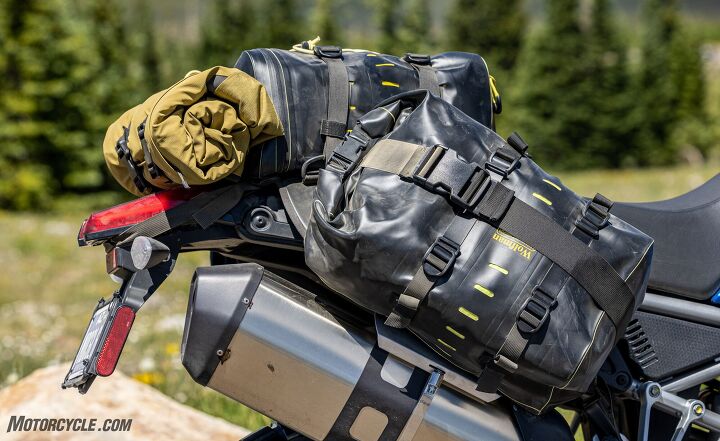

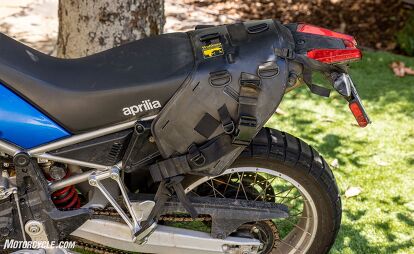



























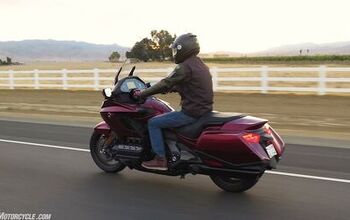
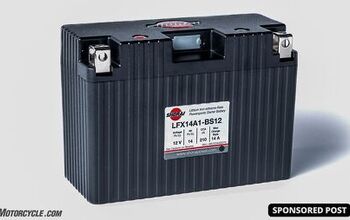














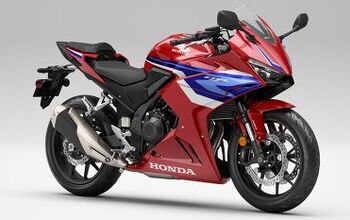
Comments
Join the conversation
Overtightening is in my blood, thanks for that. Looks like Giant loop and Mosko are still in the running if I ever find my Unicorn off roady ride.
Made in China. There goes the bustling American patriot market.